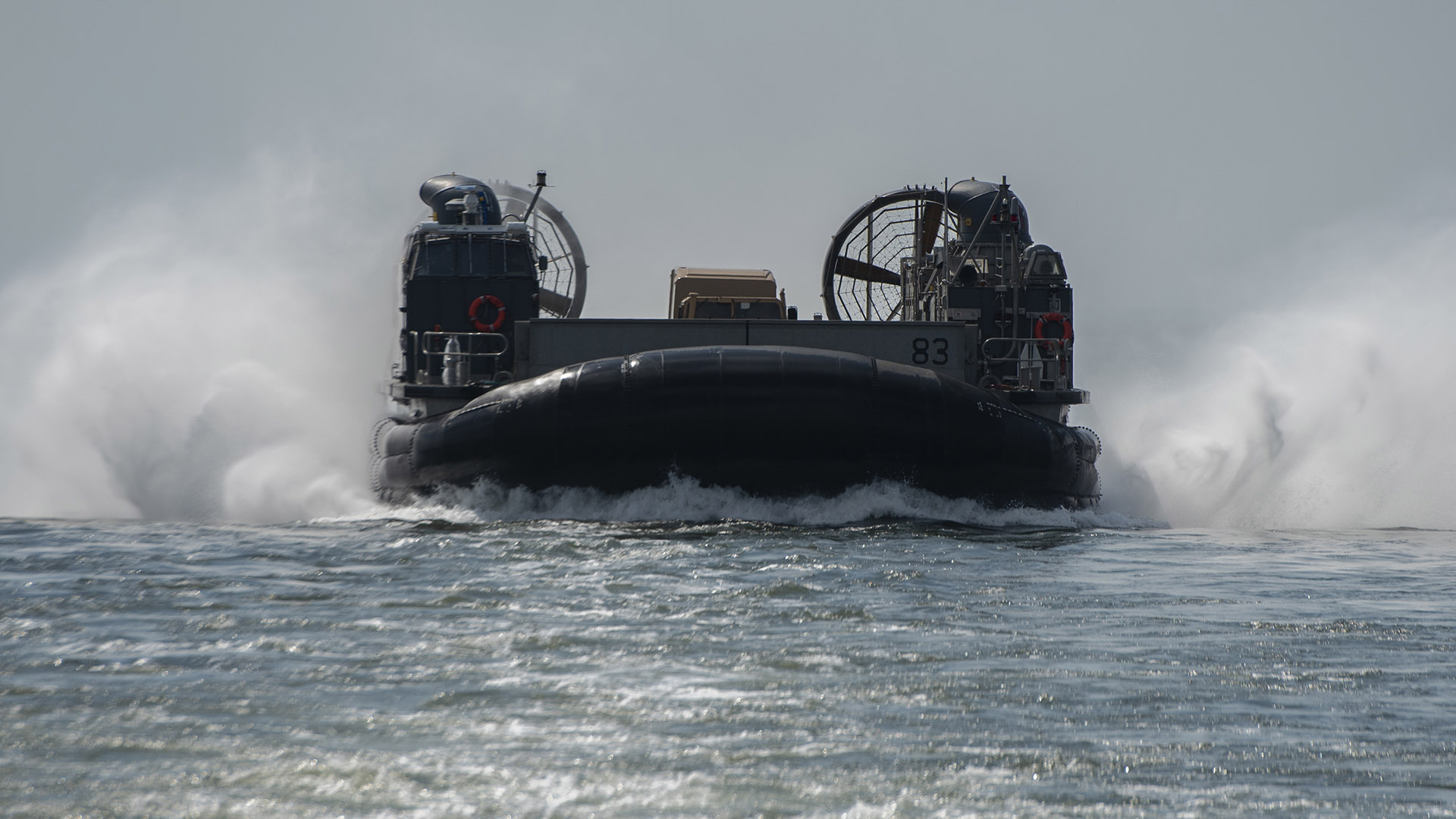

Thirty Marines and sailors were injured on May 1 when two air-cushioned landing craft collided during a nighttime training exercise off the coast of Jacksonville, Florida, Navy officials said.
“One Sailor remains under medical care at a hospital in Savannah, Georgia, and our primary focus is on our Sailor’s health and well-being,” said Cmdr. Lara Bollinger, a spokeswoman for the Navy’s 2nd Fleet. “The incident remains under investigation, and we will provide more information when available.”
The hovercraft-like transporters, which the Navy calls Landing Craft Air Cushion or LCACs, are high-speed amphibious craft that ride on a cushion of air to bring Marines and equipment ashore, according to the Navy. Each LCAC has a crew of five and can reach a top speed of nearly 50 miles per hour while fully loaded. They deploy from the well decks of amphibious warfare ships and can carry a maximum payload of between 60 and 75 tons, enough to carry any armored vehicle in the U.S. inventory, including an M1 Abrams tank.
One of the LCACs was from the amphibious assault ship USS Wasp and the other came from the amphibious transport dock USS New York, Bollinger told Task & Purpose on Friday.
“Both LCACs involved in the incident remained afloat and have since returned to their ships,” Bollinger said.
Five sailors were taken to Savannah Memorial University Medical Center in Georgia to be medically evaluated, a 2nd Fleet news release says. Four of those sailors have since been released.
Subscribe to Task & Purpose today. Get the latest military news and culture in your inbox daily.
Marines and sailors assigned to the Wasp Amphibious Ready Group and the 24th Marine Expeditionary Unit, or MEU, were taking part in integrated training as part of the Composite Training Unit Exercise, Bollinger said.

The exercise involves training for a variety of missions including non-combatant evacuation operations; visit, board, search, and seizure missions; reconnaissance and surveillance operations; and amphibious raids and assaults, said Capt. Emma Thompson, a spokeswoman for the 24th MEU.
The at-sea training is meant to strengthen the 24th MEU ahead of its upcoming deployment embarked with the amphibious ready group, Thompson told Task & Purpose on Friday. She deferred questions about the LCACs mishap to 2nd Fleet.
This is the latest training accident involving the 24th MEU during the same exercise. Sgt. Colin Arslanbas, a Reconnaissance Marine, died in an April 28 parachute mishap. Arslanbas was assigned to Camp Lejeune, North Carolina at the time of his death.
In the aftermath of Arslanbas’ death, the 24th MEU temporarily paused its training for 24 hours, Thompson told Task & Purpose for a previous story.
“This provided an opportunity for the Marines and Sailors to process and mourn the loss of their teammate,” Thompson said. “Despite the pause, essential leadership continued to focus on deliberate planning for the upcoming operations critical to the 24 MEU’s Composite Unit Training Exercise.”
Amphibious ready groups allow the Marine Corps to project power across the globe, but the Navy’s fleet of amphibious assault ships have long been plagued by maintenance problems and other readiness issues.
The USS Bonhomme Richard was destroyed by a July 12, 2020 fire while tied to the pier at San Diego. More recently, the USS Boxer had to return home in April just 10 days into its deployment after its starboard rudder failed. The Navy announced Thursday that its newest amphibious assault ship would be named the USS Helmand Province as a tribute to the fierce battleground faced by Marines in Afghanistan.
The latest on Task & Purpose
- Army captain gives up his rank to enlist in the Marine Corps
- Army fires commander of Germany-based air defense unit
- Navy offers some sailors $100,000 to reenlist
- Army general bans most work texts after duty day
- Air National Guard officer and state senator arrested for burglary